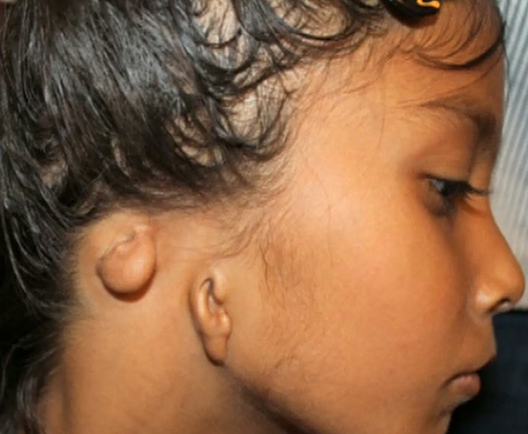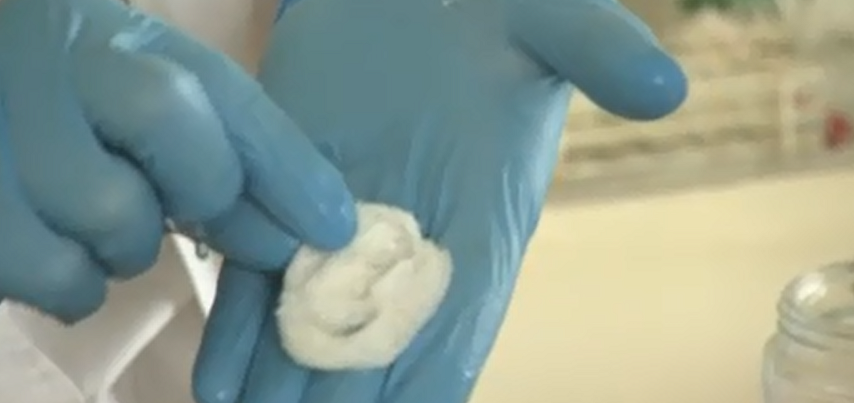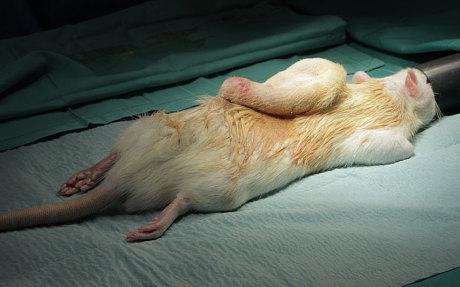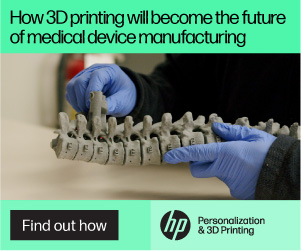 The next frontier in 3D printing will likely be that of bioprinting. We have already seen many incredible ways in which 3D printing has been able to work in conjunction with the human body, to change the lives of thousands of individuals for the better. Whether it’s 3D printed knee or hip implants, prosthetic hands, or entire 3D printed craniums saving a person’s life, the technology has simply been remarkable.
The next frontier in 3D printing will likely be that of bioprinting. We have already seen many incredible ways in which 3D printing has been able to work in conjunction with the human body, to change the lives of thousands of individuals for the better. Whether it’s 3D printed knee or hip implants, prosthetic hands, or entire 3D printed craniums saving a person’s life, the technology has simply been remarkable.
Last year we saw quite a bit of buzz around the 3D printed human ears that several researchers had been able to create. We even saw an artist 3D print a replica of Vincent van Gogh’s severed ear, which used one of his relative’s actual DNA.
Every year thousands of children worldwide, are born with a condition known as microtia. Microtia is a congenital deformity of the external ear, where it fails to fully develop. Approximately 1 in every 8,000-10,000 babies born will have some form of microtia. Although prosthetic ears, as well as ears crafted from a patient’s rib cartilage have been produced, researchers have been looking for an alternate, more precise means of reconstruction.
This is where 3D printing comes into play. Professor Alex Selfalian and his team at University College London have been working tirelessly on creating exact replica’s of a patients ear, via 3D scanning and printing technology. They have already begun testing the procedure on rats, with very successful results. This technology is about to undergo its first actual test within the human body, however. Within the next few months the very first clinical trial of its kind will see a dozen ear transplants performed on a dozen children in India. Trials are also expected to begin in the UK next year as well
The way the procedure will work is quite amazing. First a 3D scanner will scan the normal ear of the patient. At this point, the scan will be inverted, and turned into a 3D printable model. The researchers will then 3D print the ear out of a spongy plastic-like material which is porous and will act as a scaffold. The ear will then be placed under the skin on the forearm of the patient for between 4 and 8 weeks. Over this time, the forearm skin will grow around the scaffold, along with the necessary blood vessels. The ear is then removed from the arm, and transplanted to the patient’s head.
“This is going to revolutionise organs transplantation,” Dr Michelle Griffin, a surgeon at University College Hospital, told the BBC’s Inside Out program. “When children are born without ears or congenital deformities of the ear they have to go through quite invasive surgery. They have to get rib cartilage then we design it into ear and then they go through 3 or 4 operations to try and get this new ear. However if we can just 3D print the ear that limits 4 or 5 operations to just one operation”.
Clearly the technology is already transforming the medical field. It will be interesting to follow as these clinical trials commence. Within a few years, this technique could very well be commonplace. Let’s hear your thoughts on the clinical trials about to begin within the 3D printed ear forum thread on 3DPB.com
Subscribe to Our Email Newsletter
Stay up-to-date on all the latest news from the 3D printing industry and receive information and offers from third party vendors.
You May Also Like
3D Printing Unpeeled: New Arkema Material for HP, Saddle and Macro MEMS
A new Arkema material for MJF is said to reduce costs per part by up to 25% and have an 85% reusability ratio. HP 3D HR PA 12 S has been...
3D Printing News Briefs, January 20, 2024: FDM, LPBF, Underwater 3D Printer, Racing, & More
We’re starting off with a process certification in today’s 3D Printing News Briefs, and then moving on to research about solute trapping, laser powder bed fusion, and then moving on...
3D Printing Webinar and Event Roundup: December 3, 2023
We’ve got plenty of events and webinars coming up for you this week! Quickparts is having a Manufacturing Roadshow, America Makes is holding a Member Town Hall, Stratafest makes two...
Formnext 2023 Day Three: Slam Dunk
I’m high—high on trade show. I’ve met numerous new faces and reconnected with old friends, creating an absolutely wonderful atmosphere. The excitement is palpable over several emerging developments. The high...

































